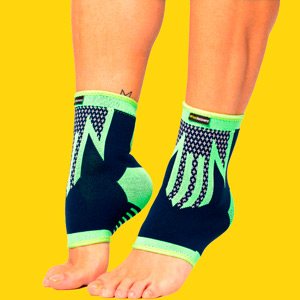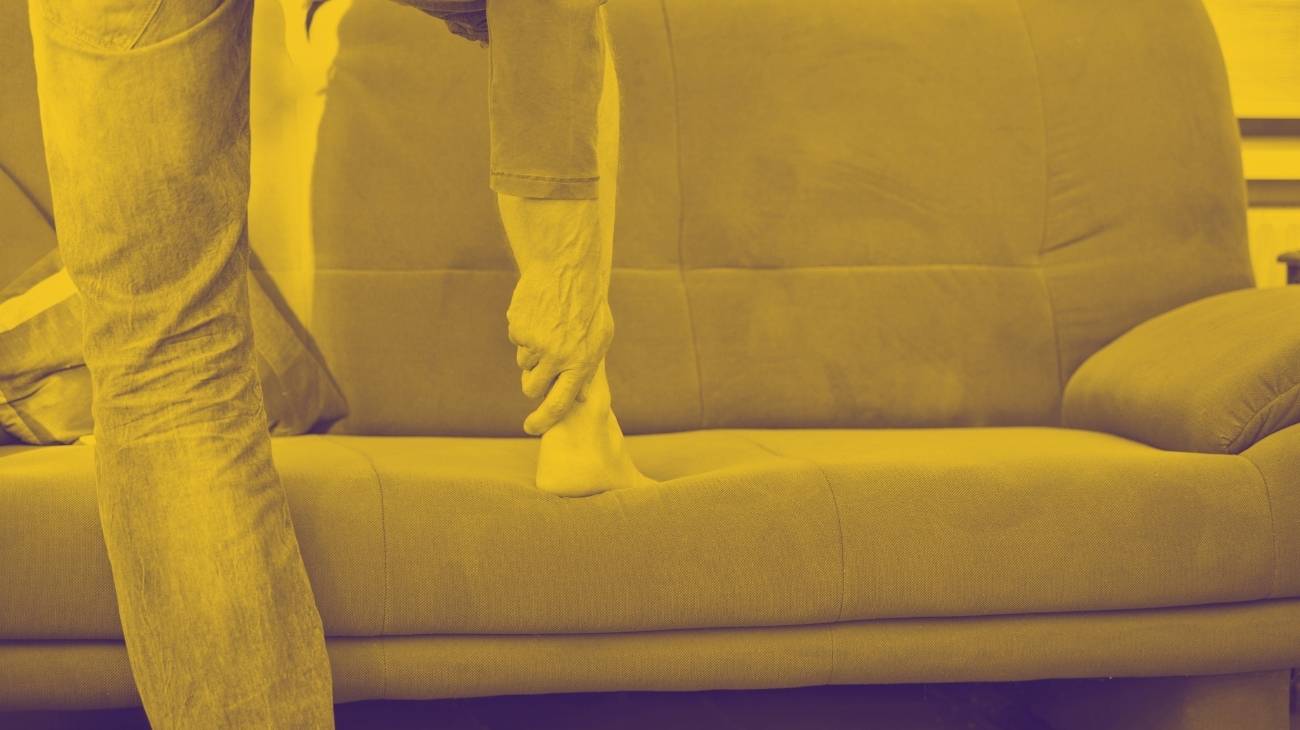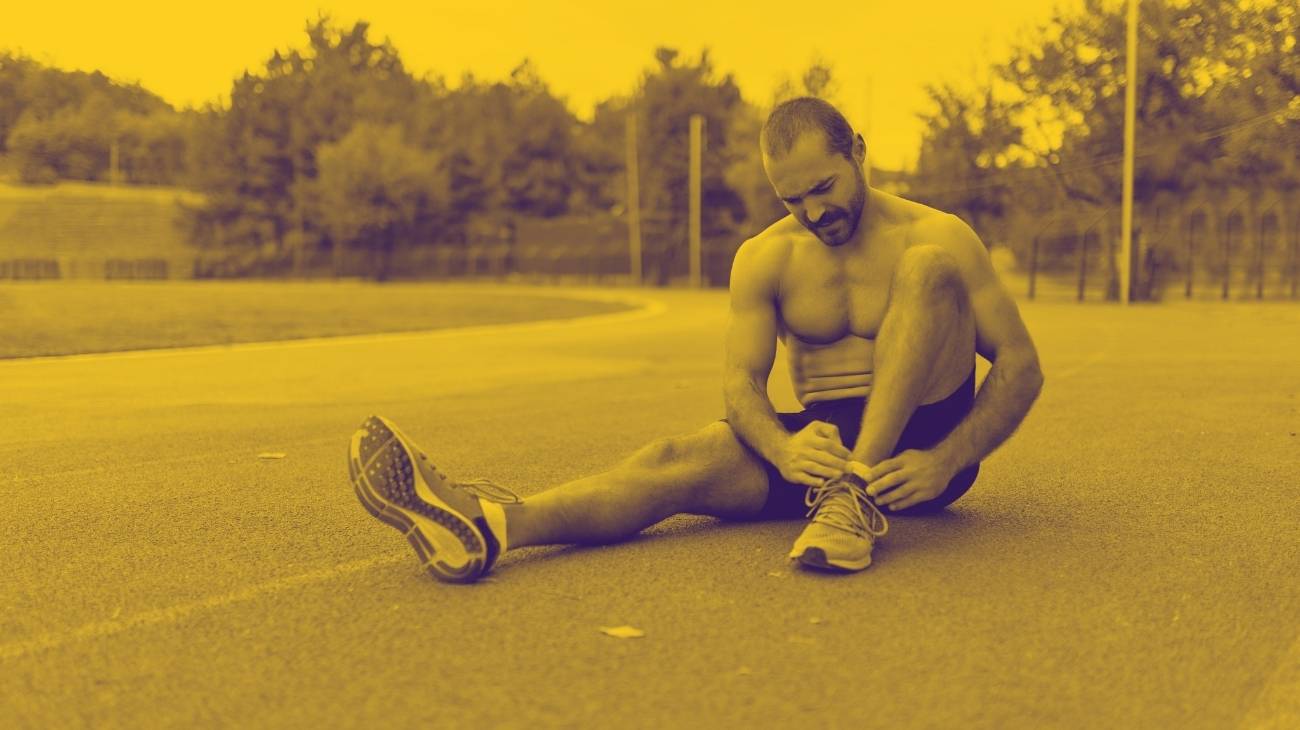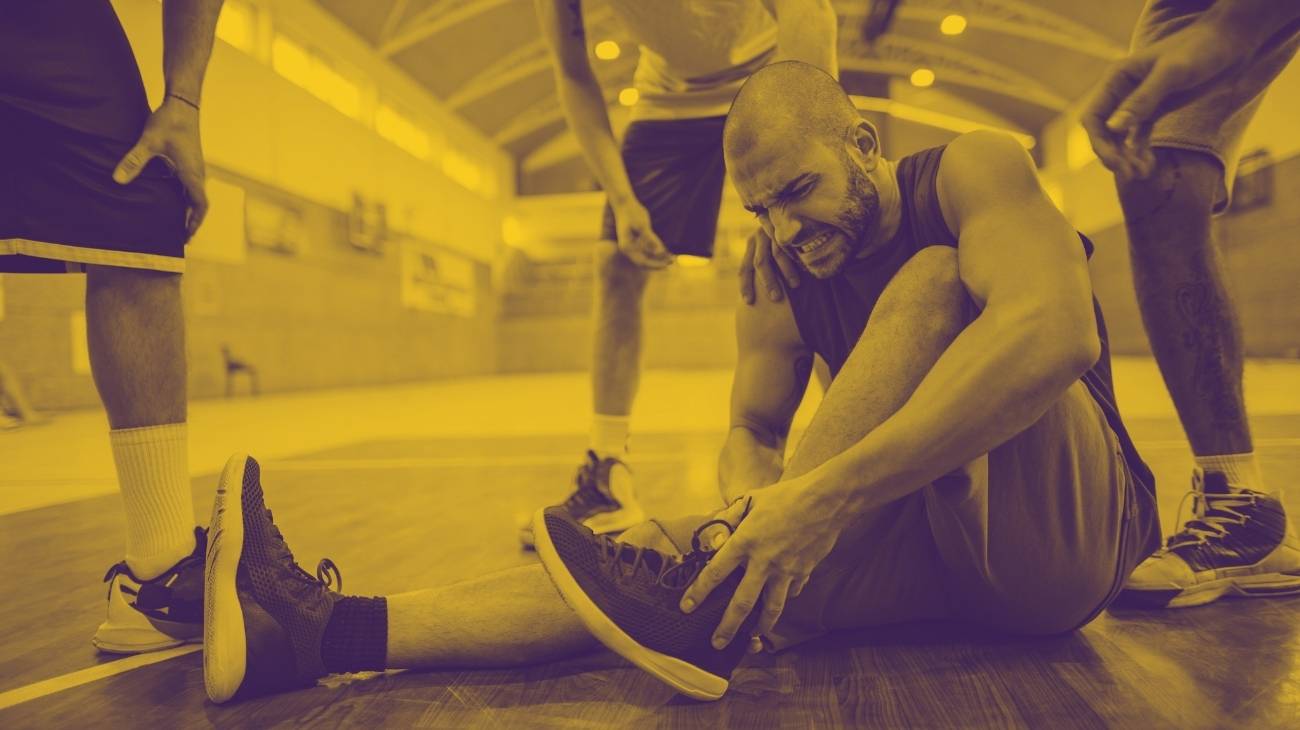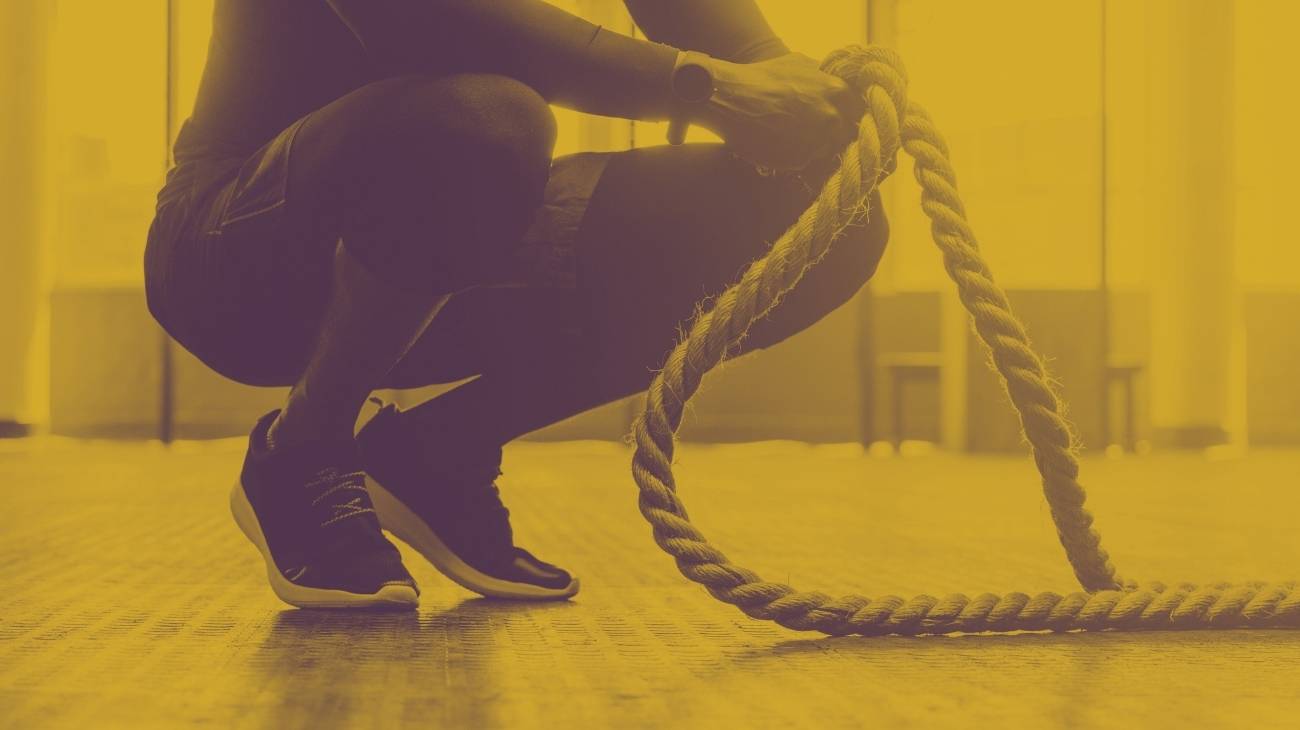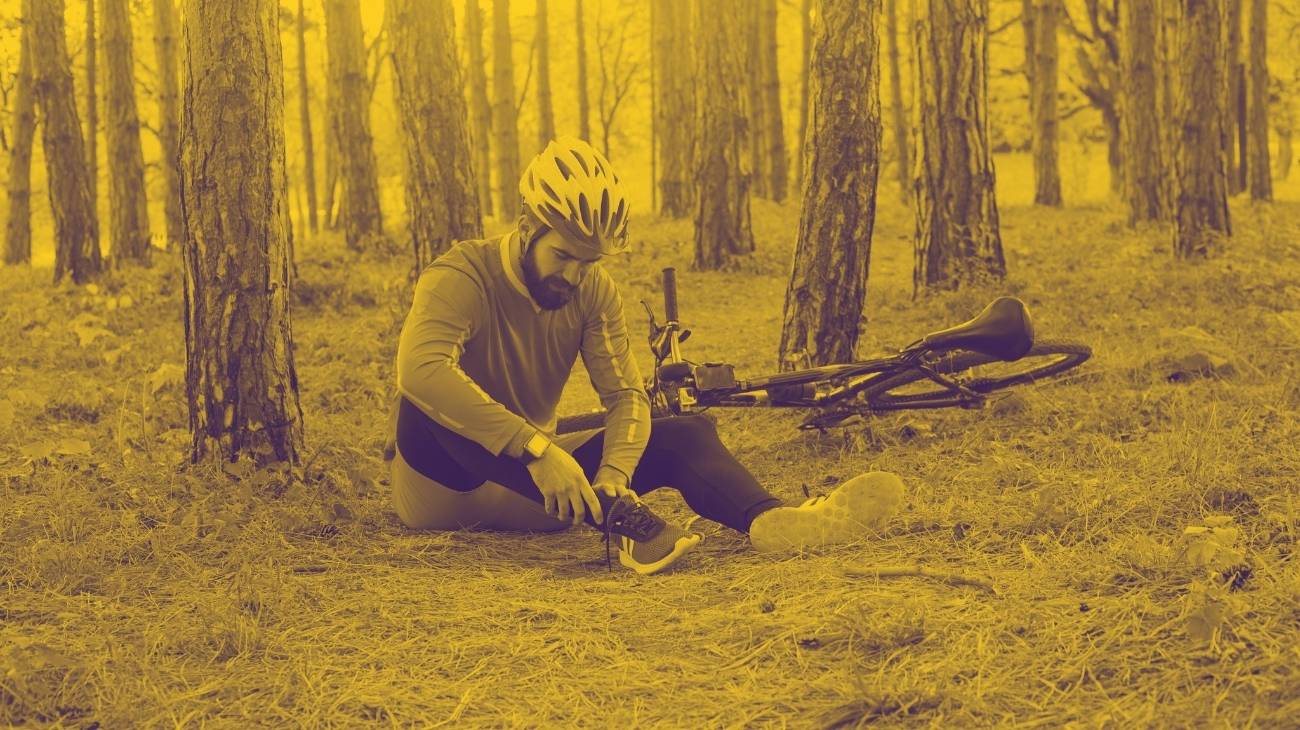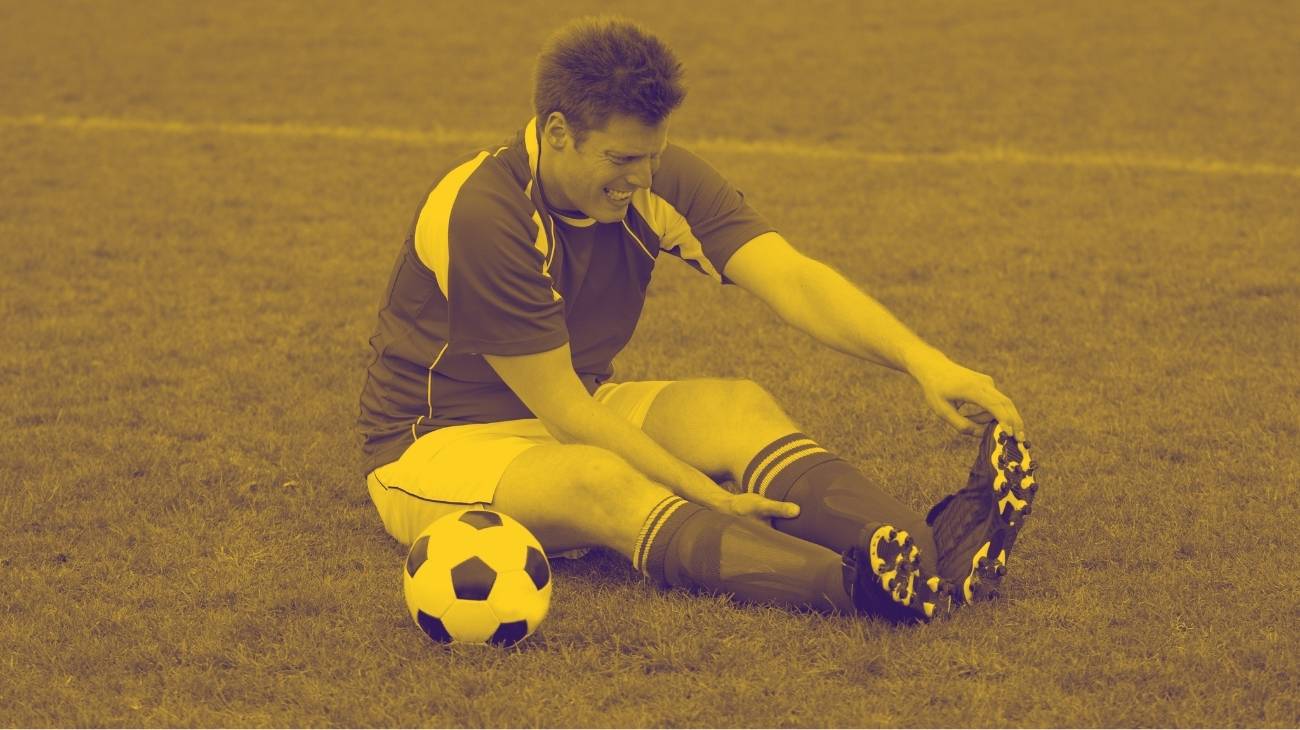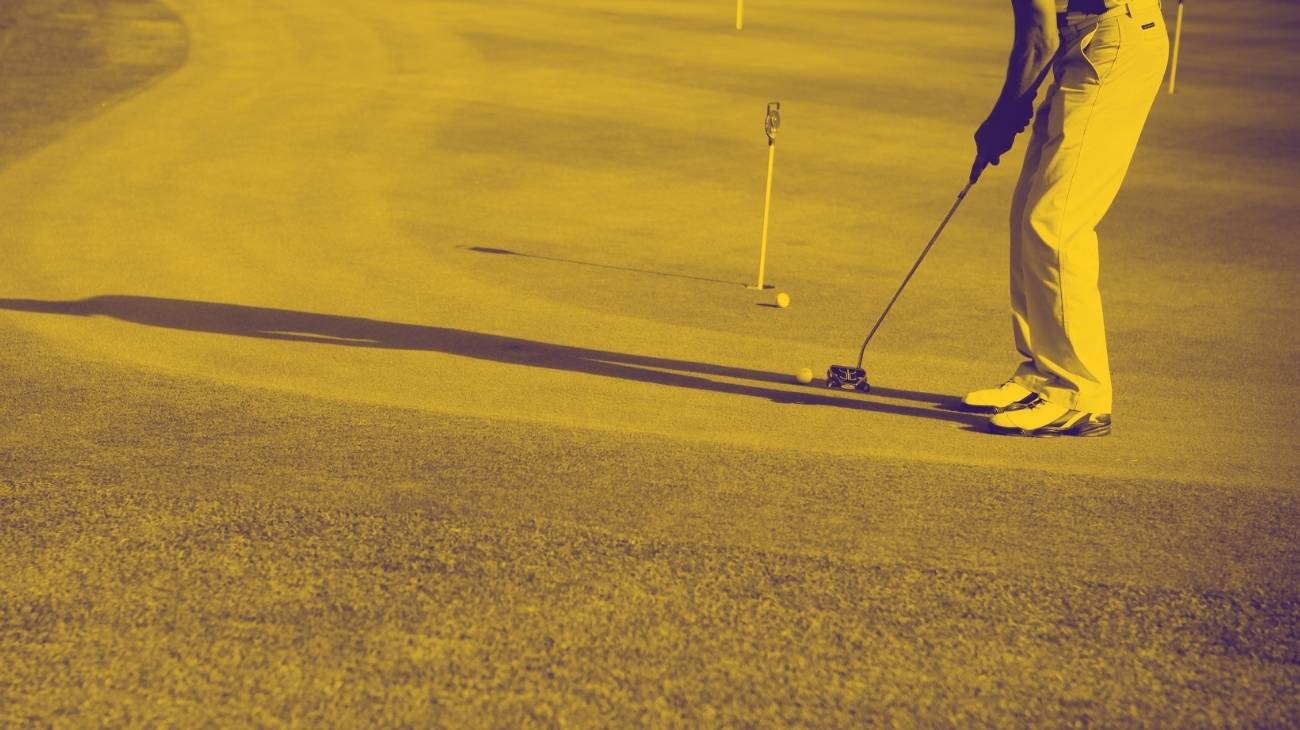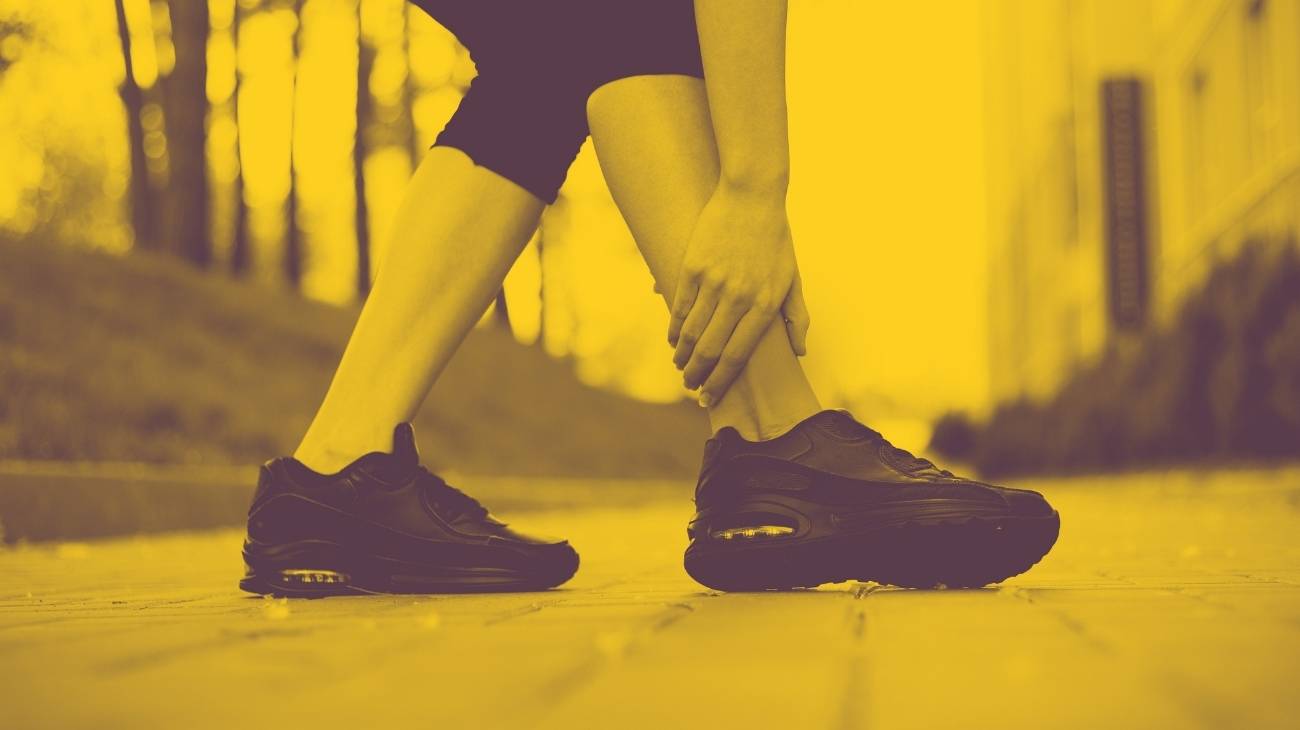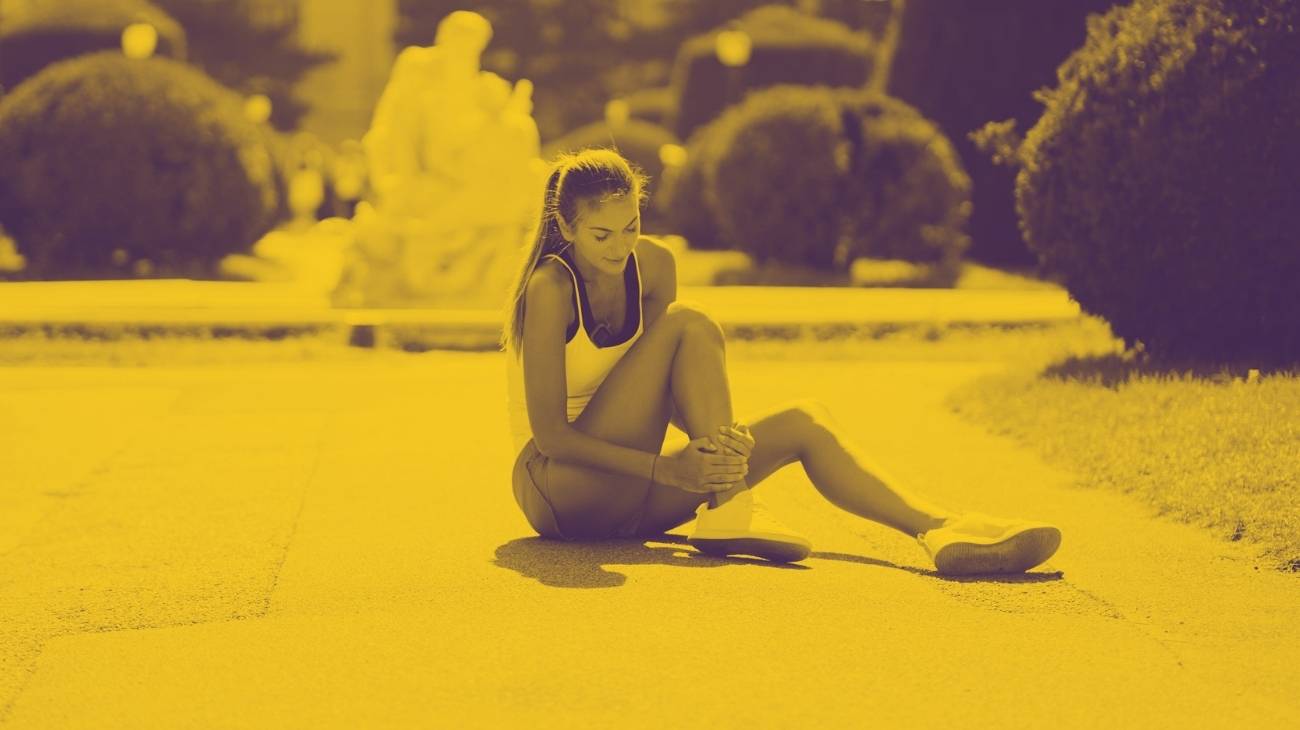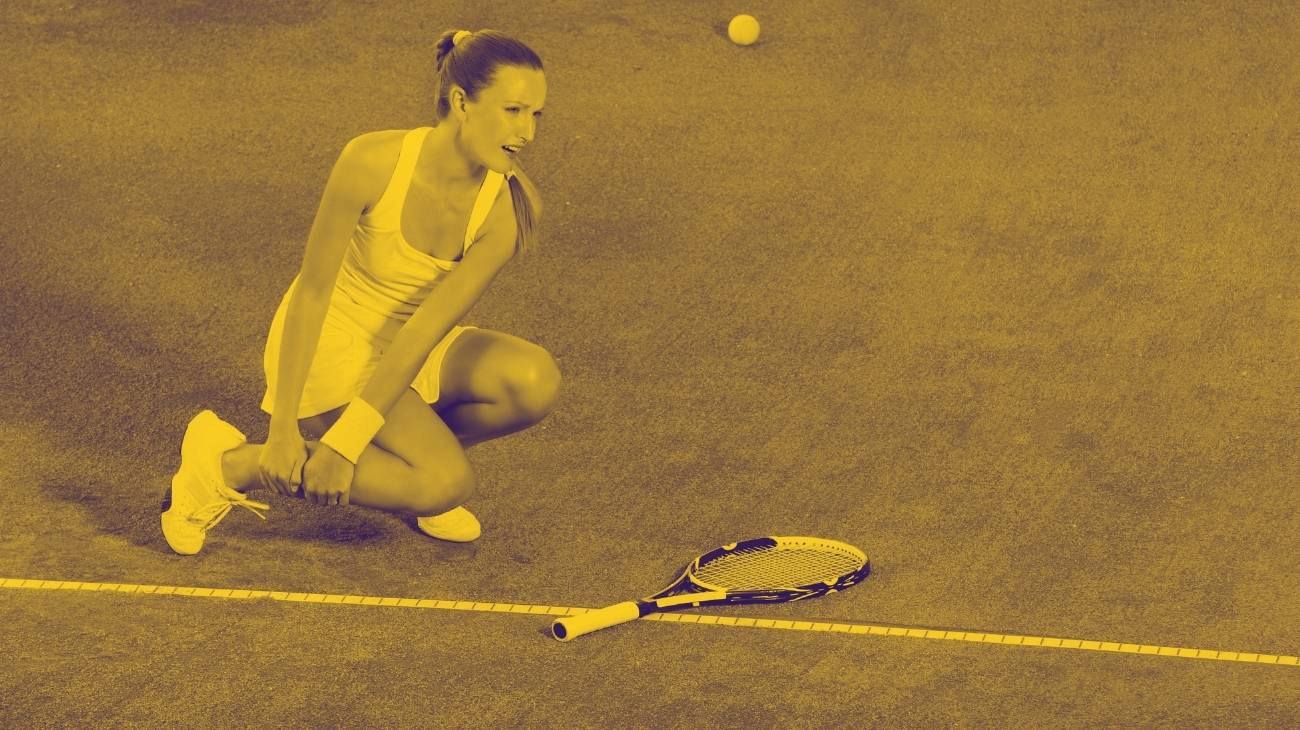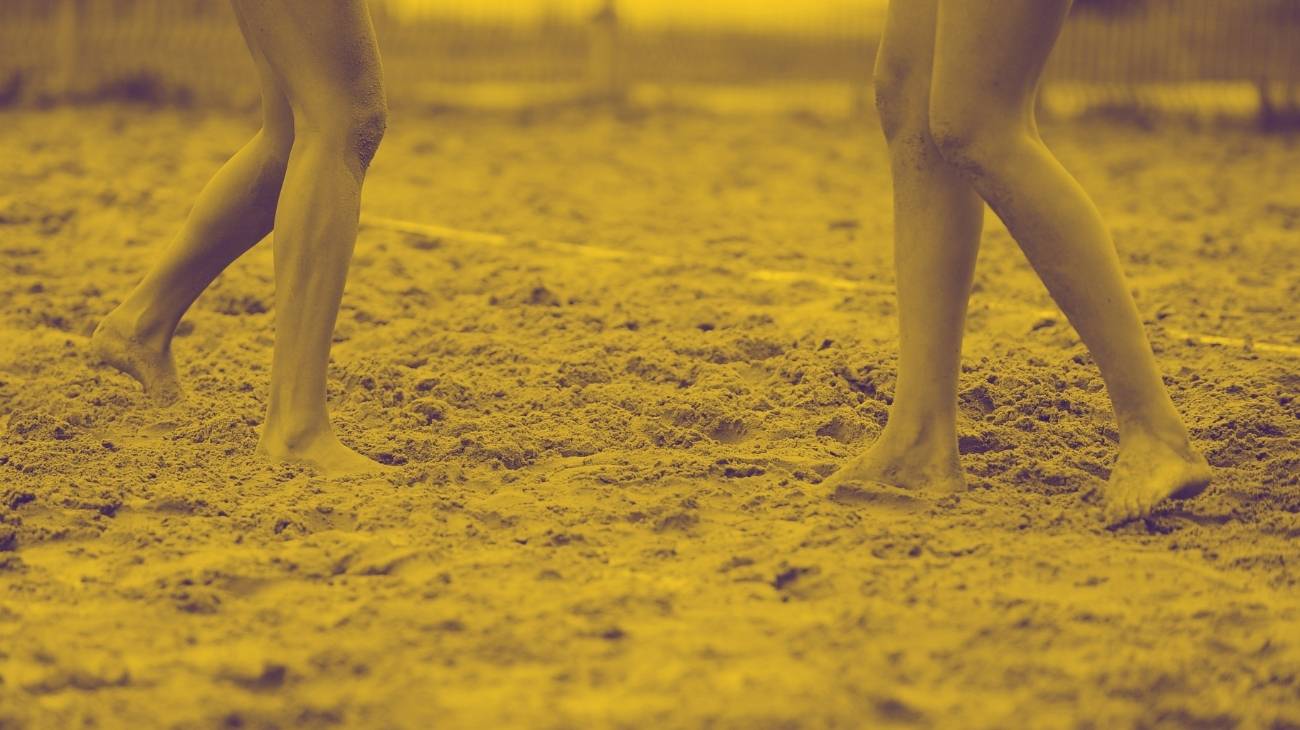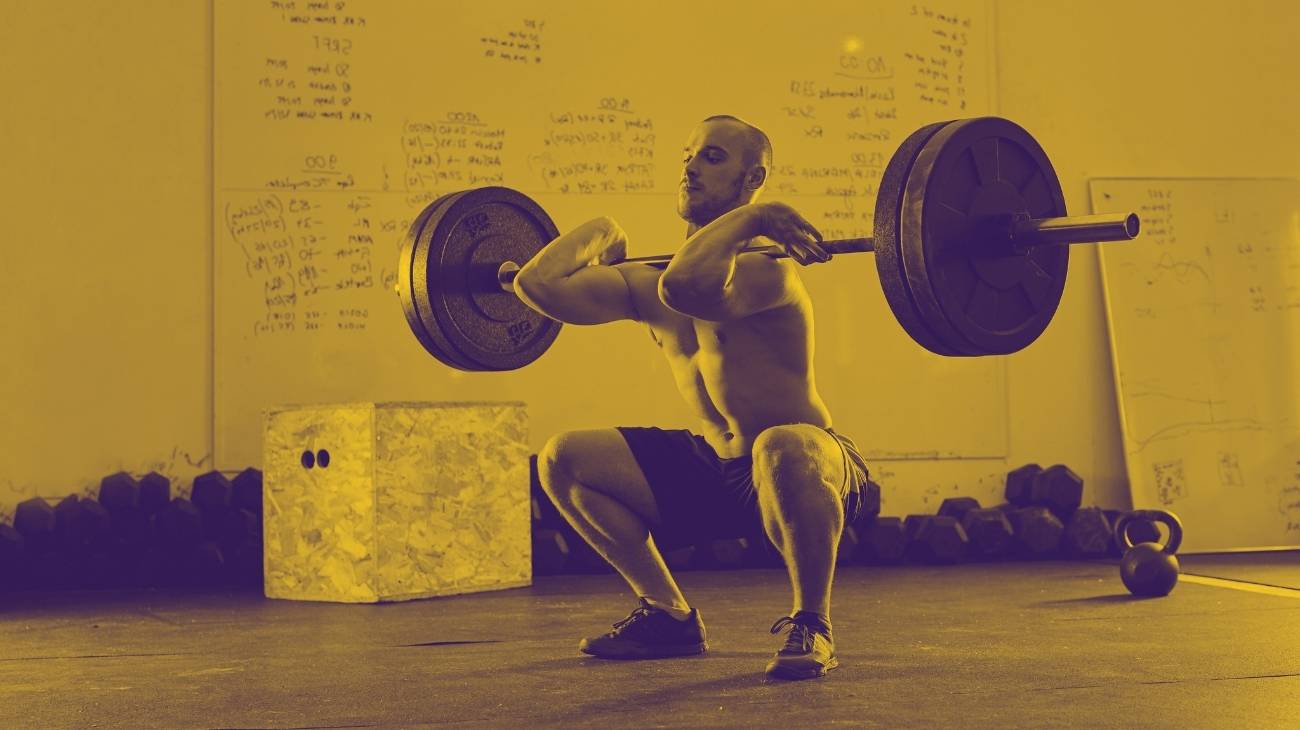- What is the best ankle brace for running injuries?
- Video: Ankle joint anatomy
- Types of ankle braces you should know about
- What are the most common ankle injuries in running?
- Buying guide: Tips on how to buy the best ankle brace for runners
- Are compression sleeves for the ankle really effective during running?
Running is a sport derived from athletics that involves jogging and walking at specific intervals. More and more people are doing it, and they are all exposed to a number of injuries, mostly to the ankles, usually due to overuse or overexertion, but also due to inadequate protection.
For this reason, in this article we will explain the most common injuries in running, the types of ankle braces that you can use to recover from your injury, their characteristics and their effectiveness in this discipline. In this way, you will be able to better understand their use and thus achieve greater efficiency.
What is the best ankle brace for running injuries?
- Sizes: S-M-L-XL
- Colors: Green, Pink and Grey
- Material: Breathable
- Nº of Products: 2 pieces
- Uses: Rehabilitation and sport
- Elastic Fabric
- Double Anti-Slip Silicone
- Ergonomic & Adjustable
- Sport Design
- Unisex

Double Silicone Anti-slip

Elastic Fabric
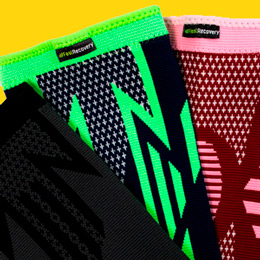
Various Colors and Sizes
- Sizes: T1 to T6
- Colours: Grey and Blue
- Material: Breathable Material
- No. of Products: Single
- Type of closure: None
- Positioning aid
- Highly elastic fabric made of breathable material
- Material not indicated
It is designed for people suffering from arthrosis and tears because it stimulates blood circulation thanks to the viscoelastic pads located on each side. The model of this muscle-stabilising bandage comes in different sizes, but be aware that it can only be used on the right foot. The lateral guides can cause discomfort when walking and, in some cases, wear out easily.
- Sizes: S-M-L
- Colours: Black
- Material: Breathable Antibacterial
- Nº of Products: Single
- Type of closure: None
- 3D technology with mesh fabric
- Technogel pad for added protection
- Suitable for sports activities
- Highly elastic fabric made of breathable material
- Not waterproof
- Slightly thin material
Thanks to its unique design it is possible to relieve pain, reduce swelling and protect the ligaments in the demands placed on the tibio-tarsal joint. This model can be worn on the right leg when playing football, basketball or gardening. The elastic material is breathable, but in summer or in high temperatures it can cause superficial injuries to the skin.
- Sizes: One size fits all
- Colours: Black
- Material: Polyester
- No. of Products: Single
- Type of closure: Closure with elastic straps and velcro
- Adjustable tension
- Silicone anti-slip bars
- Size too large
You can use it on either foot and, as it is one size fits all, it is suitable for both men and women. The silicone of the anti-slip bars offers safety when walking, running or jumping, avoiding injuries or sudden displacements of the ankle. As it does not come with instructions, you must put it on carefully to avoid misuse, and the stitching finish may scratch the sole and ankle, causing skin irritation.
- Sizes: L
- Colours: Black
- Material: Spandex
- Nº of products: 1
- Type of closure: Closure with elastic straps and velcro
- Non-slip elastic strap
- Wide range of motion
- Helps reduce foot pressure
- Additional compression support
- Bulky
- No instructions
To improve the efficiency of shock absorption it is necessary to position the foot and fasten the support to the ankle and sole, by means of its powerful Velcro straps. Then, incorporate the stabilisation strap and you are ready for climbing, running, cycling and many other sports. Keep in mind that its non-pilling material can cause irritation due to the bulky space it takes up, so you won't get a proper fit.
- High anatomical versatility
- Stabilizes the joint
- Large sizes
Its ergonomic design achieves maximum grip without disrupting joint range and its external seams keep the foot and lower calf area snug at all times. Thanks to the flexible material it is made of, it can be worn under shoes in summer because it evaporates body moisture. If you choose this compression garment for intensive use, it is likely that the back seams will come apart and the ankle brace will separate.
- Sizes: One size fits all
- Colours: Black
- Material: Neoprene
- Nº of Products: 2
- Type of closure: Closure with elastic and velcro straps
- Machine washable
- Quality Finish
- Multifunctional Protection
- Soft and comfortable fabric
- Thin material
- Low compression
Its built-in stabilising strap improves the grip of either foot, making it an easy fit for both men and women. The multi-functional hook and loop protection system may cause some discomfort when wearing tight-fitting footwear. The Hually ankle brace may lose elasticity in the malleolus area over time or when worn frequently.
- Sizes: S-M-L-XL-XXL
- Colours: 3 Options: Black, Red and Blue
- Material: Neoprene
- Number of Products: 1
- Type of closure: Closure with elastic and velcro straps
- Durable quality and easy to clean
- Anatomically shaped for a secure fit
- No indication of material
The adjustable strap stimulates alternating compression and achieves a better support of the ligaments. It is characterised by the fact that it is a non-slip garment and its polyamide main component makes the protector machine washable. The articulated elastic thread closure may cause discomfort in the plantar area, making the anatomical fit uncomfortable. The massaging fabric may not fit properly on some users.
- Sizes: L
- Colours: Blue
- Material: Neoprene
- No. of Products: 1
- Type of closure: Closure with elastic and velcro straps
- Provides strong support
- Adjustable design with snap straps
- Ideal for anyone
- Breathable material
- Bulky
- Contains only one unit
It is ideal for treating Achilles tendonitis and plantar fasciitis, as it stimulates blood circulation and reduces pain and inflammation. You can also use it after surgery. Its adjustable straps with velcro closure provide maximum support to the joint and you can hand wash its breathable fabric without neoprene. It does not come with instructions, so you will need to put it on correctly before use.
Video: Ankle joint anatomy
Types of ankle braces you should know about
What are the most common ankle injuries in running?
Running is an activity that requires training and preparation for both short and long distances. It is usually done individually, but there are also marathon-like competitions in which several people can participate. As with all sports, it is normal for athletes to get injured, especially in the ankles, as this is one of the most stressed joints.
The most common ankle injuries in this sport are:
Sprained ankles
Ankle sprains are the most common injuries in sports and usually do not lead to serious joint complications. They occur when the ankle is sprained and the ligaments that support it are overstretched. The symptoms are: severe pain in the affected area, swelling, and difficulty walking.
In running, they are usually caused by improper movements while jogging or walking after crossing obstacles on the path. They also occur in other sports, and the recovery time varies from 4 to 7 weeks, but in some cases, when the sprains are more severe, the rehabilitation time can be extended to a month.
Fractures
It is usually caused by similar factors as a sprain: excessive movements during jogging or walking that result in twisting of the joint, with the difference that in a fracture the bone moves from its natural position and may even break. Generally, ankle fractures require surgery and a recovery period of several weeks or months with rehabilitation therapies, depending on the severity of the injury.
Runners suffer this type of injury when they receive blows or violent impacts to the ankle. Symptoms include severe pain, inability to move the joint, bruising, swelling and, if the bone is broken, blood. In most cases, a fracture can be seen with the naked eye, but it can also be confirmed with X-rays.
Ankle tendonitis
Ankle tendonitis is a severe inflammation of the tendons near the joint that significantly affects the ability of the affected person to move. In runners, track and field athletes, and other athletes such as footballers or basketball players, this swelling is caused by overloading the tendons when they have been running for too long and without the necessary breaks.
The injury is usually not serious and its symptoms are limited to discomfort in the area of the hamstring. To prevent tendonitis from becoming chronic, it is recommended to take sufficient rest between training sessions and warm up the joints before running.
Dislocation
When the ankle joint is dislocated, there is a displacement of the joint from its natural position. However, unlike a fracture, the joint can be repositioned on its own (subluxation) or by physical therapists or trauma specialists (dislocation). Whether it is a subluxation or a dislocation, these injuries cause athletes severe pain and prevent them from running normally until they have fully recovered.
In running, dislocations are caused by hard impacts, sprains or violent movements of the ankle. In athletes, they usually occur after excessive forceful movements or falls that stretch the ankle ligaments to a point where they hurt and possibly tear. Symptoms include discomfort in the joint, swelling and redness of the skin in the affected area. Recovery time from a dislocation or dislocation varies from 4 to 6 weeks.
Torn ligaments
The ligaments of the ankle joint are responsible for connecting the bones together and stabilizing the joint. When the ligaments are overused, they can tear and cause injury to the athlete. In running, they are often caused by sudden movements and stretches of the joint or by insufficient warm-up training before the race.
The most common symptoms of a tear are severe pain and discomfort when moving the joint. If the tear is very severe, the athlete must undergo surgery to reattach the ligaments and then rest for several weeks to prevent re-tearing.
Buying guide: Tips on how to buy the best ankle brace for runners
Before choosing the best ankle brace for running, it is necessary to consider what function it should perform: It should protect us from possible injuries, relieve pain due to muscle discomfort or treat a moderately severe injury, and much more. The material from which the ankle brace is made is another essential aspect, as well as the fastening systems it has.
Depending on its function
- Ankle braces for Pain: High compression sports ankle sleeves are ideal for relieving pain or discomfort in the joint and for athletes with ankle injuries. By applying pressure to the area, they improve blood circulation and reduce inflammation caused by bumps, knocks or heavy falls by the athlete.
- Protective Ankle support: This type of sports ankle brace is beneficial for athletes who do not have injuries, as they are used preventively. They act as shock absorbers for potential impacts that can cause serious injuries in runners. They are often recommended for running and similar sports. So, you can always run with the protection that ankle braces provide.
- Partially open ankle braces: Partially open compression sports ankle braces are suitable for preventing injuries caused by blows or falls without causing the athlete to lose much freedom of movement. However, it is recommended that a sports physician be consulted before use, as this type of garment leaves the Achilles tendon area exposed and a sudden fall can result in a torn tendon.
- Closed ankle supports: Closed compression ankle supports are most commonly used by athletes. They apply optimal pressure to limit joint mobility while providing comfort and protection for the athlete. They cover all injury-prone areas and are excellent for cushioning impacts and falls.
- Stabilization of the ankle: this is one of the advantages of the ankle braces, as it provides the runner with balance and improved posture and alignment of the ankle, avoiding deformities and injuries that can occur due to improper movements or deviations of bones and ligaments.
Material
Due to its ease of processing and availability, most ankle supports today are made of neoprene, a carbon derivative that is both flexible and resistant, excellent at protecting against mild to moderate injuries, hypoallergenic and also reduces perspiration so that the garment does not slip when running.
There are also other nylon compression sleeves for ankle, which are very effective for flexibility and immobilization of the joint. Due to their therapeutic potential, they are more recommended for treating existing injuries in athletes.
Type of support
Most sports compression ankle sleeves have some type of support that holds the ankle in the joint and prevents it from sliding out while the athlete is training or playing the sport. Some are included directly in the garment, while others are supplemental. Regardless, both types are very effective, and it is up to the athlete to choose the most appropriate support for their needs.
Some of them are:
- Velcro: Ankle support have adhesive strips that contract and apply pressure to the orthosis when touched lightly, so that it is adjusted and does not slip out of its original position. They are among the most widely used and are comfortable to walk in.
- Straps: The straps of ankle braces provide support that is known to prevent lateral movement of the joint, thus protecting the athlete from serious injuries such as dislocations, sprains or fractures. Although it significantly restricts movement, it is recommended for runners with weak ankles.
Size
The ideal ankle brace for an athlete is one that fits your size, is not complicated to put on, and creates the desired pressure and immobilization. It should be noted that a garment that is too small for the ankle will create excessive pressure that can lead to circulation problems, cramping and discomfort. A garment that is larger than the required size will not provide the necessary pressure and immobilization and therefore will not protect you from injury.
Design
The best design of a sports compression ankle brace and similar accessories is very subjective. It is up to the athlete to choose the colors and details they feel most comfortable with, as this could affect their athletic performance. Currently, clear and minimalist themes prevail. There are many who go for bright or fluorescent colors, but apart from their look, it is important to remember that the most important thing is that they are comfortable and protect the athlete from injuries.
Price
The cost may vary depending on the manufacturing material, design, function and quality of materials. It should be noted that we do not recommend buying very cheap ankle supports, as they do not meet the quality standards required for this type of products to heal injuries.
Are compression sleeves for the ankle really effective during running?
It has been proven that compression garments such as ankle braces are really effective in preventing and treating injuries or discomfort. These certificates have been issued after several studies, both therapeutic and sports, and ensure confidence in these garments to enhance performance in the discipline practiced and ensure a quick recovery after training.
At the same time, the product performs compression therapy, which has several benefits for improving people's health. This is due to the pressure they exert on the area, which leads to better blood circulation and thus reduce or prevent serious diseases such as lymphedema, edema, chronic venous insufficiency and others.
There is no other garment that can perform these functions quickly and easily. Its use in running has therefore become an integral part of their sportswear, protecting them from accidents in this weak area and helping them to continue and develop their career day after day.

